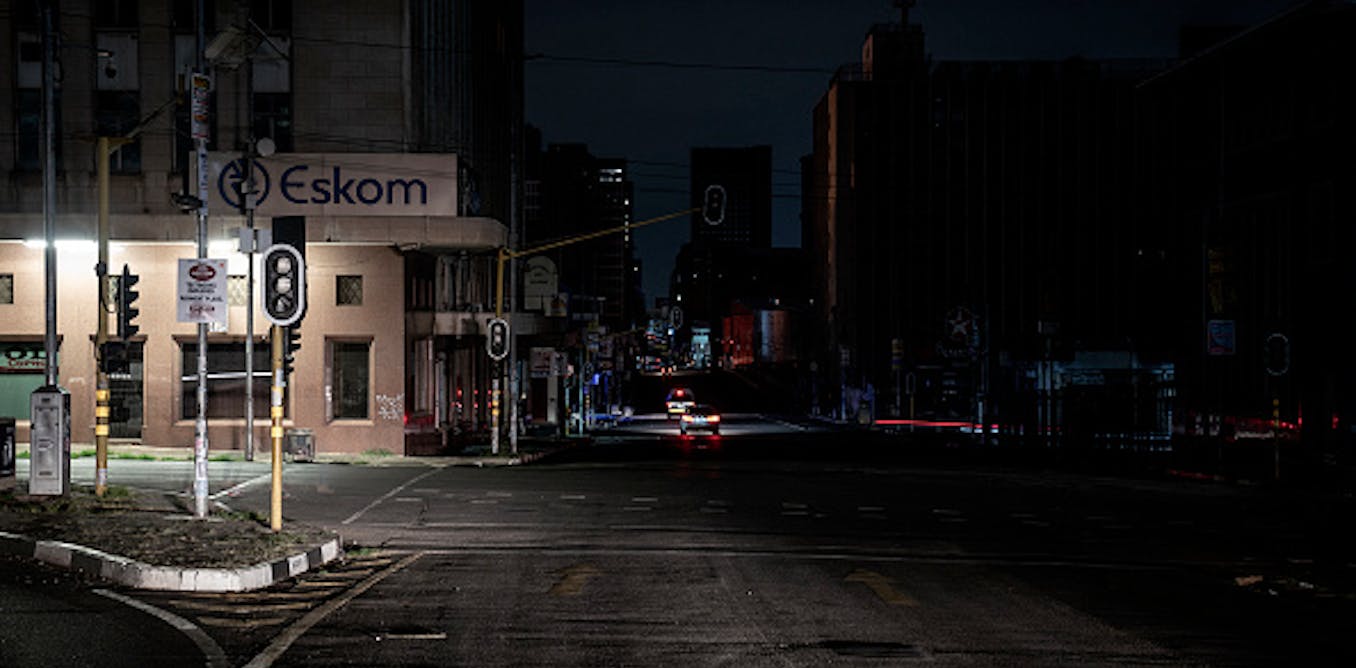The acute energy crisis in South Africa has adversely affected all aspects of the society. Regular and lengthy power outages – which started in 2007 are also contributing to an escalation in the levels of criminal activity, especially street crime. The most recent quarterly crime statistics – have undermined an ailing economy and food security, as well as health and educational outcomes.
It has become evident that power cuts added to a significant increase in all robbery categories – for July to September 2022 – compared to the same period in 2021. This corresponded with the most severe power cuts the country had ever experienced.
In addition, the police service’s annual crime data for the period 2012/13-2021/22 shows there was a spike in robberies in 2015. This was a year of more power cuts (35 days) than previous years.
Based on claims data, insurance companies are suggesting a strong link between power cuts and property crime in wealthier areas. In addition, a growing number of reports from both rich and poor parts of the country link power cuts to increases in interpersonal crime, particularly robberies.
The police and the police minister have publicly linked power cuts to robbery and other crimes in recent months.
So, how are the power cuts contributing to increases in robberies?
It is not possible to provide a definitive answer to this question as no rigorous studies showing causality between power cuts and robbery occurrence in the country have been undertaken. But one can look to crime prevention and policing theory, and studies from other countries, to provide insights into the possible link between power outages and robbery. This theory advocates that power outages (the power utility, Eskom, calls these “loadshedding”) undermine crime prevention measures. This is especially so at night as these measures are largely dependent on street lighting. Power outages also undermine the effectiveness of policing as patrols and other police services are curtailed.
Electricity and crime
The crime prevention through environmental design theory is helpful.
It uses two principal measures – target hardening; and surveillance and visibility.
Target hardening uses measures such as locked doors, gates, fencing, alarm systems, CCTV cameras and burglar bars in and around buildings to deter criminals. It is widely accepted in the criminology literature that target hardening has the potential to reduce the risk of home invasions and business robberies in some contexts. These measures should ideally be combined with other crime prevention interventions.
In South Africa, private security companies have suggested that criminals have taken advantage of the fact that many home and business security systems are compromised during power outages.
Yet, robberies tend to be more prevalent in poorer urban areas in the country, where residents cannot afford to install such security systems. And most robberies take place in public spaces.
South Africans are feeling more insecure: do Ramaphosa’s plans add up?
Surveillance and visibility assumes that people are likely to be discouraged from robbing others in public spaces, where their actions will be clearly seen by others (“eyes on the street”) and they may be identified and caught by police.
This can include the presence of people in the area, either going about their normal daily activities or actively patrolling, and the presence of CCTV cameras. Lighting in public spaces, especially at night, is nonetheless an essential requirement for visibility and surveillance to be effective. Studies from other countries have shown that street lighting and CCTV cameras are effective in reducing robberies.
Power outages, particularly at night, clearly undermine visibility. This is evident from the many reports of people being targeted by criminals while walking in the streets after dark.
Power cuts in South Africa are playing havoc with the country’s water system
Systematic reviews of policing research have shown that regular and visible police patrols, mainly when directed at crime hot spots, are an effective crime prevention intervention. Obviously, police cannot satisfactorily patrol at night during power outages. This makes the work of South Africa’s police more dangerous.
In response to a parliamentary question about the impact of power outages on the work of the South African Police Service (SAPS), Bheki Cele, the police minister, responded that:
(It) has an adverse effect on service delivery in the SAPS … on all communication and network operations, including the registering of case dockets … A number of stations cannot function at night because there are no lights …
There have also been reports of some police emergency call centres being uncontactable during power outages.
No easy solutions
There are no practical short- to medium-term crime prevention alternatives for the authorities to pursue during power outages, other than exempting high crime areas from the outages. That might not be possible in such a severe electricity crisis.
Eskom CEO quits: why finding a new head for South Africa’s struggling power utility won’t end the blackouts
One positive development has been increased community patrols in some areas. Regrettably, some of this community crime prevention work has led to acts of vigilantism.




